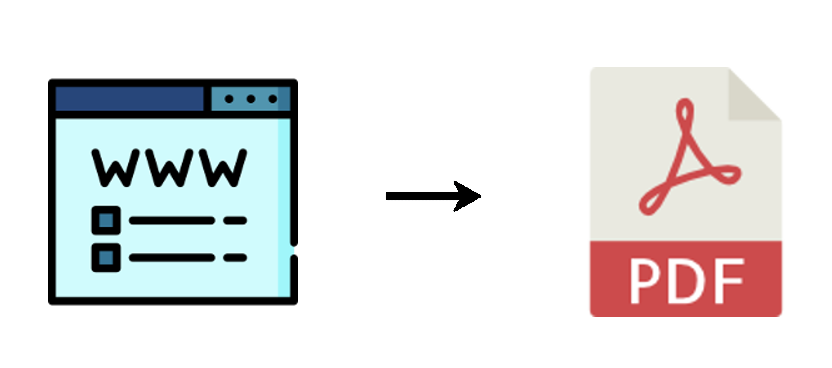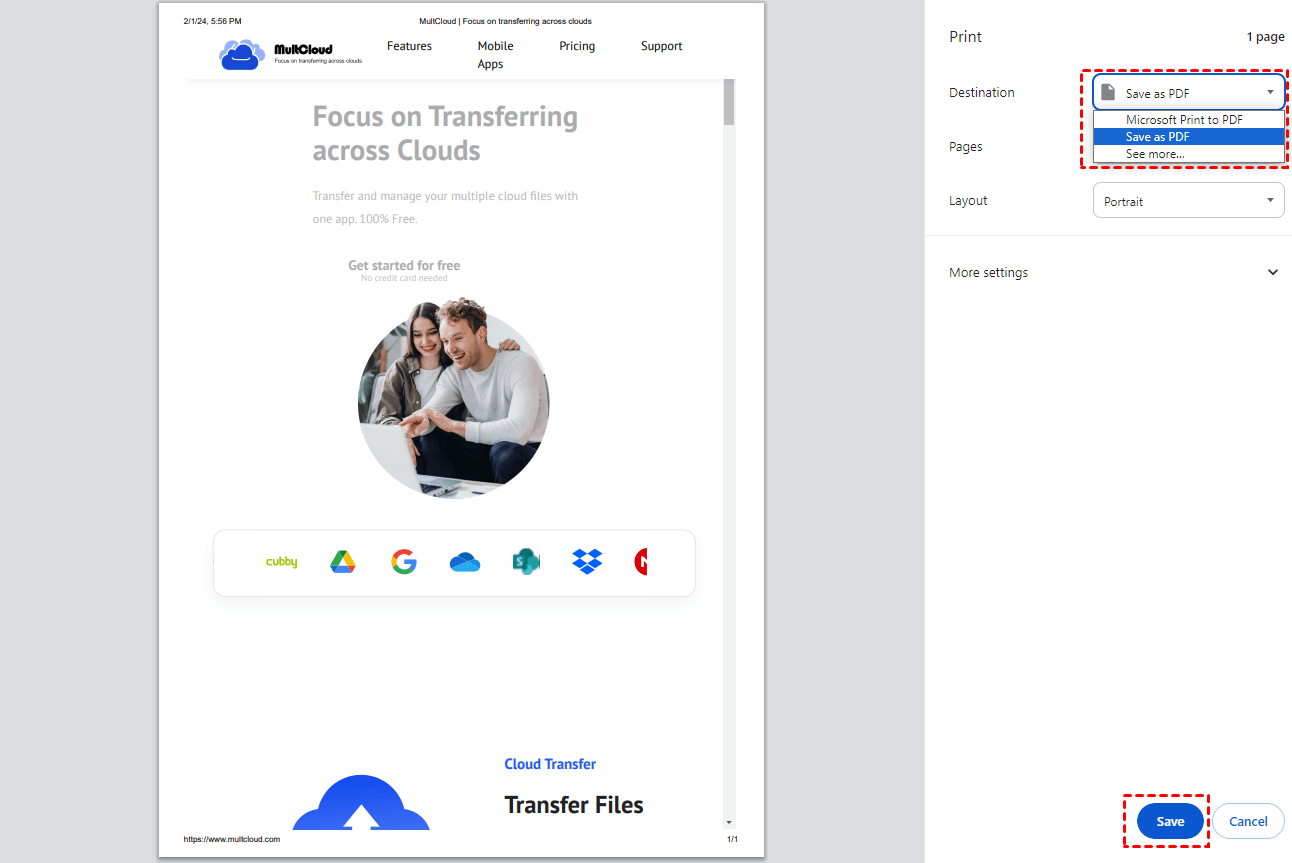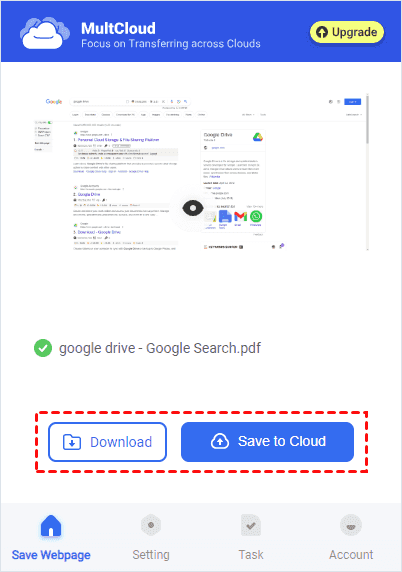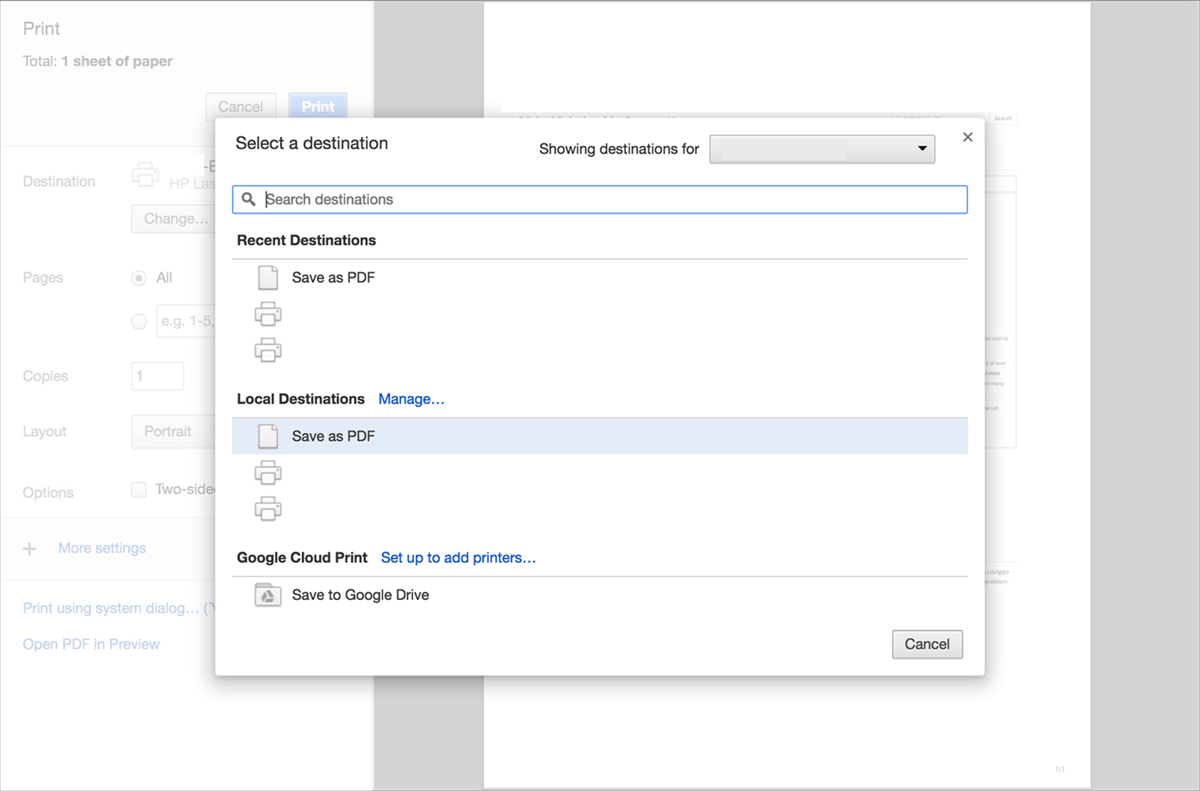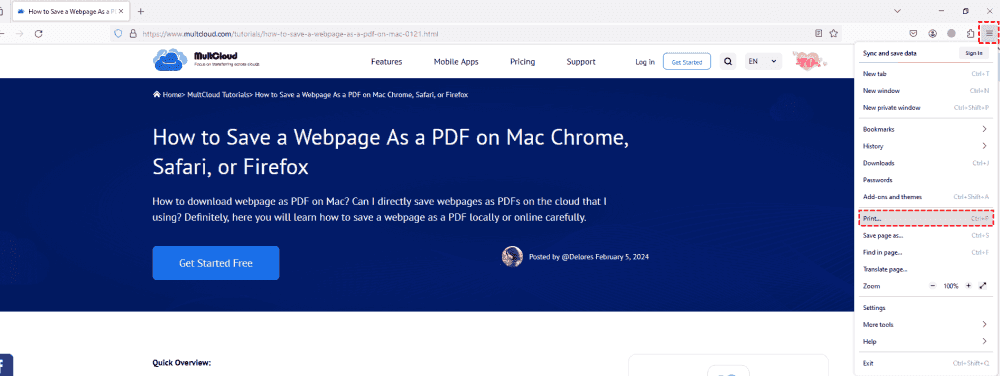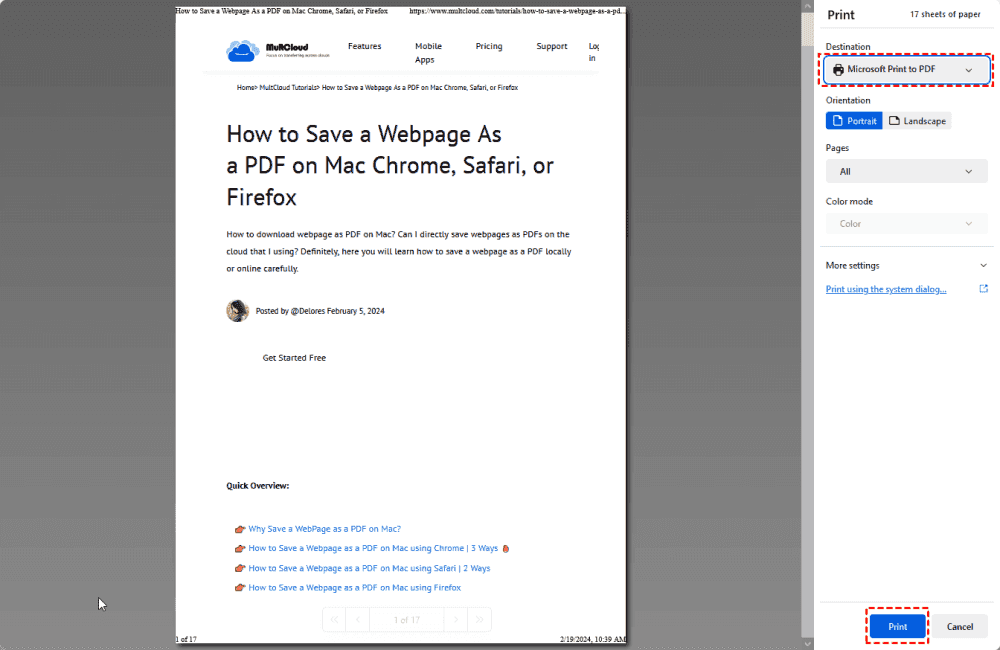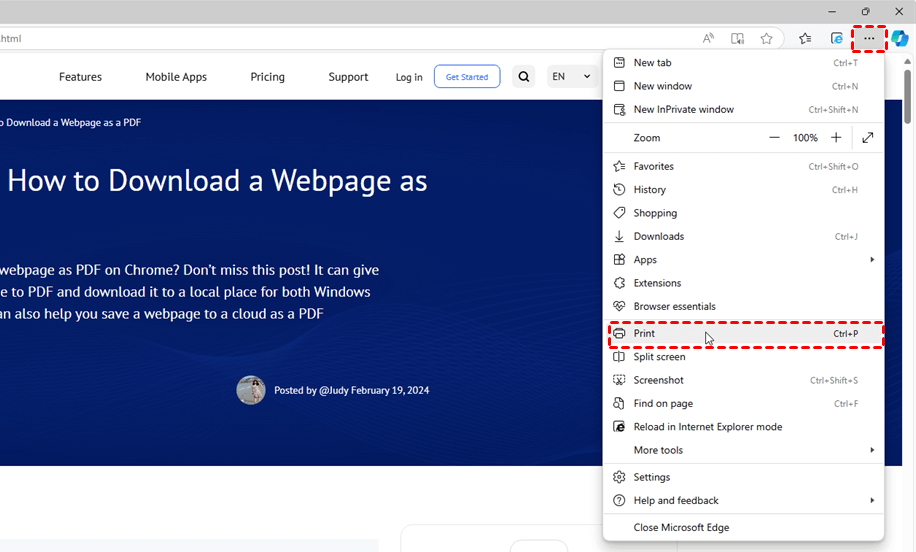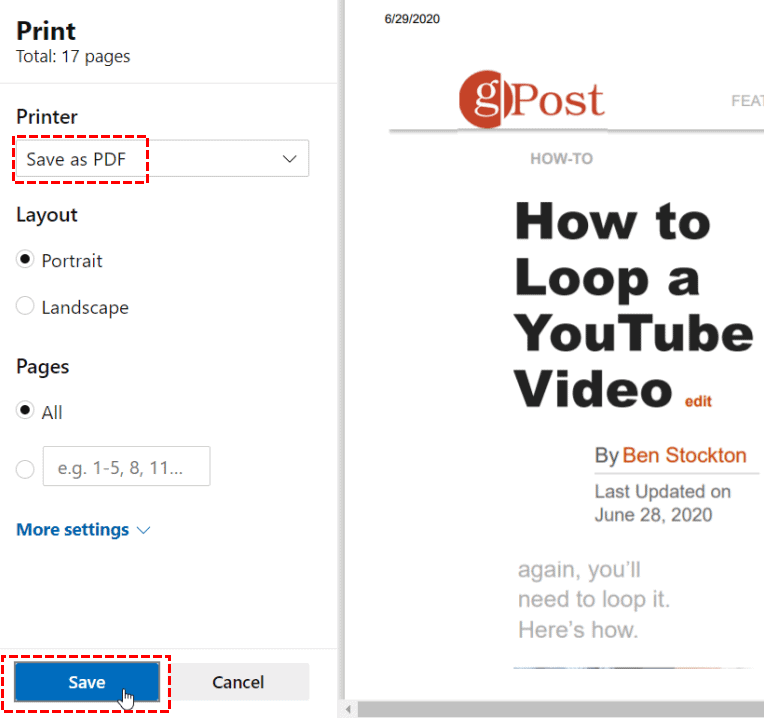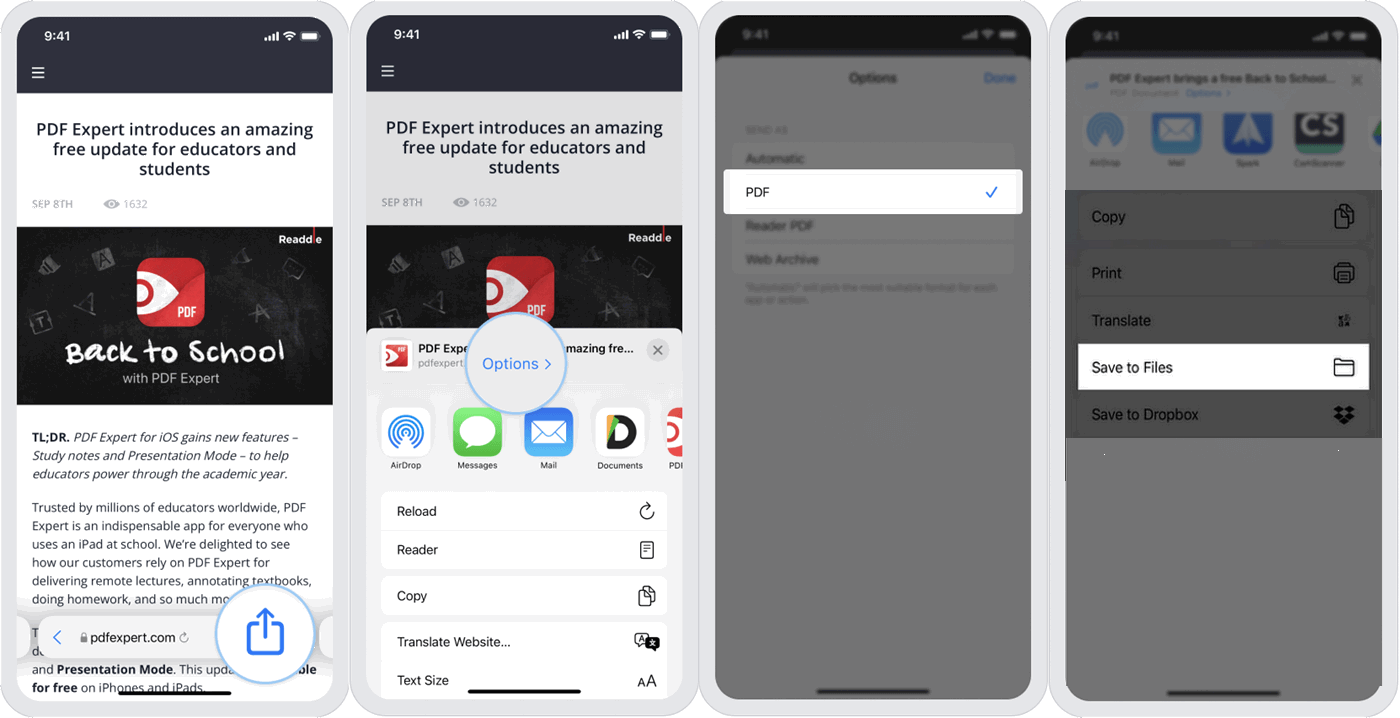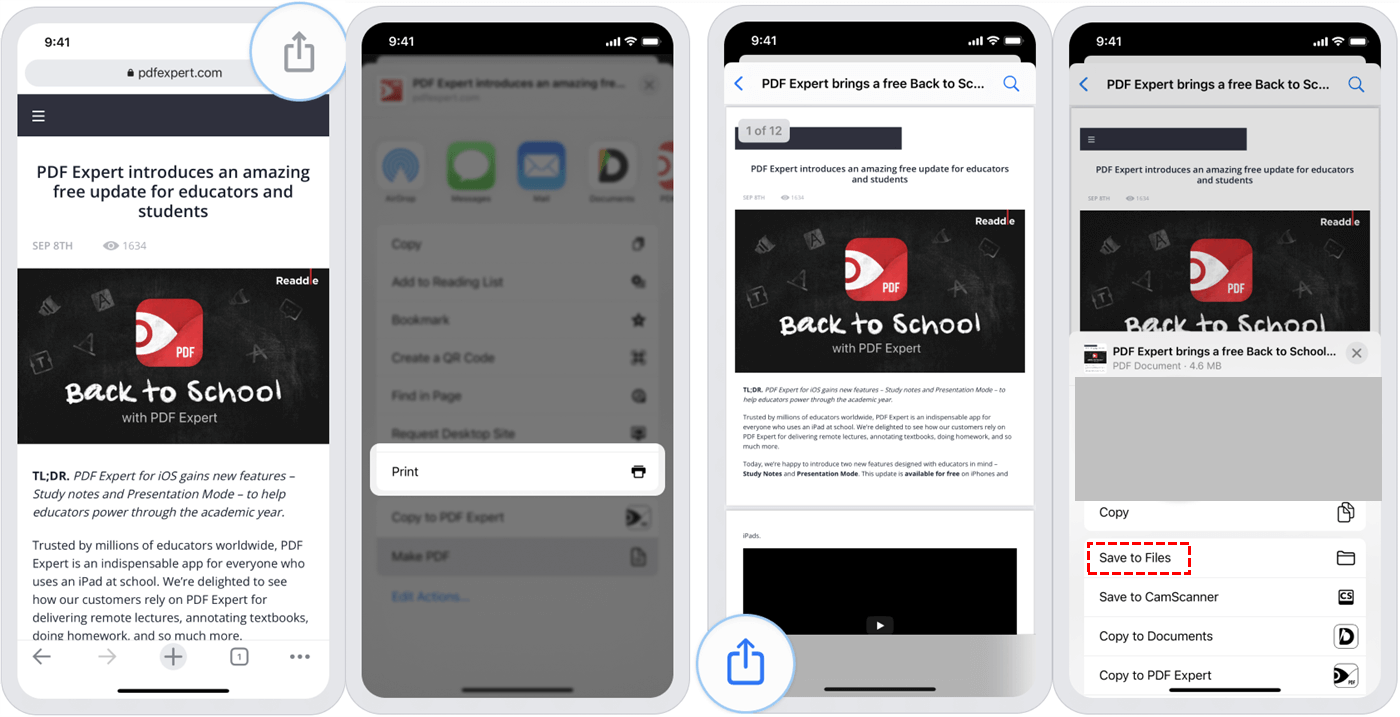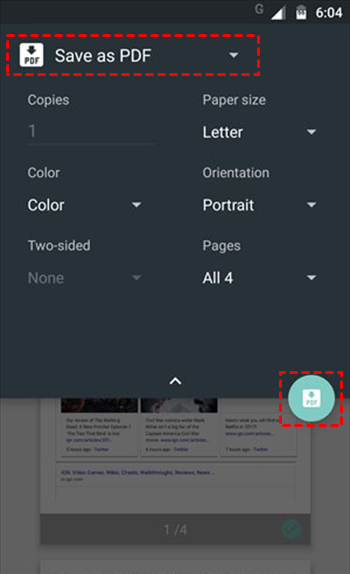User Case
Advantages of Downloading a Webpage as a PDF
Saving a web page as a PDF offers several advantages. For example, after you save a webpage to a local place, you can access it offline. This is quite helpful if you want to read or refer to the content on a webpage and there is no network. Also, when you have a PDF of a webpage, you can leave notes on some content that you want to highlight.
Besides, the web pages may be changed over time. If you have a copy of the old version on your computer, you can still access the previous content exactly. What’s more, you can archive the downloaded web pages in terms of your preferences on your computer such as archiving by dates.
How to Download a Webpage as a PDF on Computer
This part includes 5 ways to save a web page as a PDF, including saving a webpage from Chrome for Windows, Chrome for Mac, Firefox, and Windows Edge. Each method will give specific steps with pictures and you can acquire the method easily.
Chrome for Windows
Way 1: Download by Print
Step 1: Open your desired webpage and right-click on it. Then, choose “Print…” in the dropdown menu. Or, you can press Ctrl + P to enter the Print Settings.
Step 2: In the Print Settings, select “Microsoft Print to PDF” or “Save as PDF” in “Destination. Then, finish other settings and click “Save” to download the webpage as a PDF.
Way 2: Download by MultCloud Extension
MultCloud Chrome extension, “Save Webpage as PDF”, can be also used to download a webpage as a PDF. It can convert a webpage into a PDF file with headers and footers and automatically download it to a local place or save it to a cloud drive (including Google Drive, Dropbox, OneDrive, iCloud Drive, and other 30+ popular ones).
The simple steps for using this extension to download a webpage as a PDF are shown below.
Step 1: Add the MultCloud extension to your Chrome.
Step 2: Sign up for a MultCloud account.
Open the extension by clicking the logo in the extension menu. Then, select “Account” and go to “Sign up” to register for a MultCloud account for free if you are a new user.
Step 3: Check download settings.
Select “Setting” in the lower taskbar. When you enter “Setting”, check “PDF of entire page” and choose whether the PDF involves the headers and footers of this page.
Step 4: Convert a Web Page as a PDF.
Go to the web page you want to export, click the MultCloud logo to open the extension, and tap “Convert”. Then, click “Download” and this webpage will be saved on your computer as a PDF. You can find it in the download destination of your browser settings.
Notes:
- If you want to automatically download the converted web page, you can tick the “Auto-download files” option in “Settings” after you disable “Ask where to save each file before downloading” in your browser settings.
- If you want to download multiple web pages urgently, you can become a premium user so that you can run 5 downloading tasks at the same time.
Chrome for Mac
Step 1: Open your desired webpage and press Command + P to go to the Print Settings.
Step 2: Click “Change…” in “Destination” and choose “Save as PDF” under “Local Destinations”.
Step 3: Tap “Save” and name your PDF file. Then, tap “Save” again to start downloading this webpage.
Firefox for Windows
Step 1. Go to the webpage you want to download.
Step 2. Click the 3-line button in the upper-right corner and choose "Print ..." in the dropdown menu.
Step 3. Choose "Save to PDF" or "Microsoft Print to PDF" in "Destination". Then, Click "Save" to download this webpage as a PDF to the local.
Windows Edge for Windows
Step 1. Open the webpage you want to download on Microsoft Edge.
Step 2. Click the 3-dot icon in the upper-right corner and choose "Print" in the dropdown menu.
Step 3. Choose "Save as PDF" or "Microsoft Print to PDF" in "Printer". Then, click "Print" to export this webpage as PDF.
How to Download a Webpage as PDF on Phone
In addition to the methods of downloading a webpage as a PDF on a computer, there are also 3 ways to download it on your iPhone or Android Phone. Both Safari and Chrome ways will be mentioned in this part.
Safari for iPhone
Step 1. Open the desired in Safari on your iPhone and click the share icon in the lower place.
Step 2. Select "Options", choose PDF, and click Done.
Step 3. Choose "Save to Files", select a folder to save the webpage, and tap the "Save" button to download.
Chrome for iPhone
Step 1. Open the webpage in Chrome on your iPhone.
Step 2. Click the share icon in the upper-right corner and choose "Print" in the menu.
Step 3. Tap on the share again and choose "Save to Files".
Step 4. Select a folder in Files and press "Save" to download the webpage as a PDF.
Chrome for Android
Step 1. Open your desired webpage in Chrome on your Android Phone.
Step 2. Click the 3-dot icon in the upper place and select "Share".
Step 3. Choose "Print" again in the pop-up window. Then, extend the menu in the upper bar and choose "Save as PDF".
Step 4. Click the PDF icon to save the webpage to your phone as a PDF.
Conclusion
The post tells you 3 effective solutions on how to download a webpage as a PDF. If you want to make the downloading process automatic, you can choose to use the MultCloud extension. It is also helpful when you want to save a web page as a PDF to a cloud. On the other hand, if you want to download some pages, not the entire webpage, the Print feature can play a role. Try the method that is most suitable for your situation!

- Cloud Transfer: Automatically transfer files from one cloud to another with 3 easy steps.
- Team Transfer: Move files to the corresponding admin and sub-accounts of business clouds.
- Cloud Sync: Facilitate the cloud integrations by syncing files between them.
- Email Migration: Convert multiple emails to PDFs and save them to a cloud in PDF format.
- Email Download: Batch-download emails as PDFs with or without attachments.
MultCloud Supports Clouds
-
Google Drive
-
Google Workspace
-
OneDrive
-
OneDrive for Business
-
SharePoint
-
Dropbox
-
Dropbox Business
-
MEGA
-
Google Photos
-
iCloud Photos
-
FTP
-
box
-
box for Business
-
pCloud
-
Baidu
-
Flickr
-
HiDrive
-
Yandex
-
NAS
-
WebDAV
-
MediaFire
-
iCloud Drive
-
WEB.DE
-
Evernote
-
Amazon S3
-
Wasabi
-
ownCloud
-
MySQL
-
Egnyte
-
Putio
-
ADrive
-
SugarSync
-
Backblaze
-
CloudMe
-
MyDrive
-
Cubby
